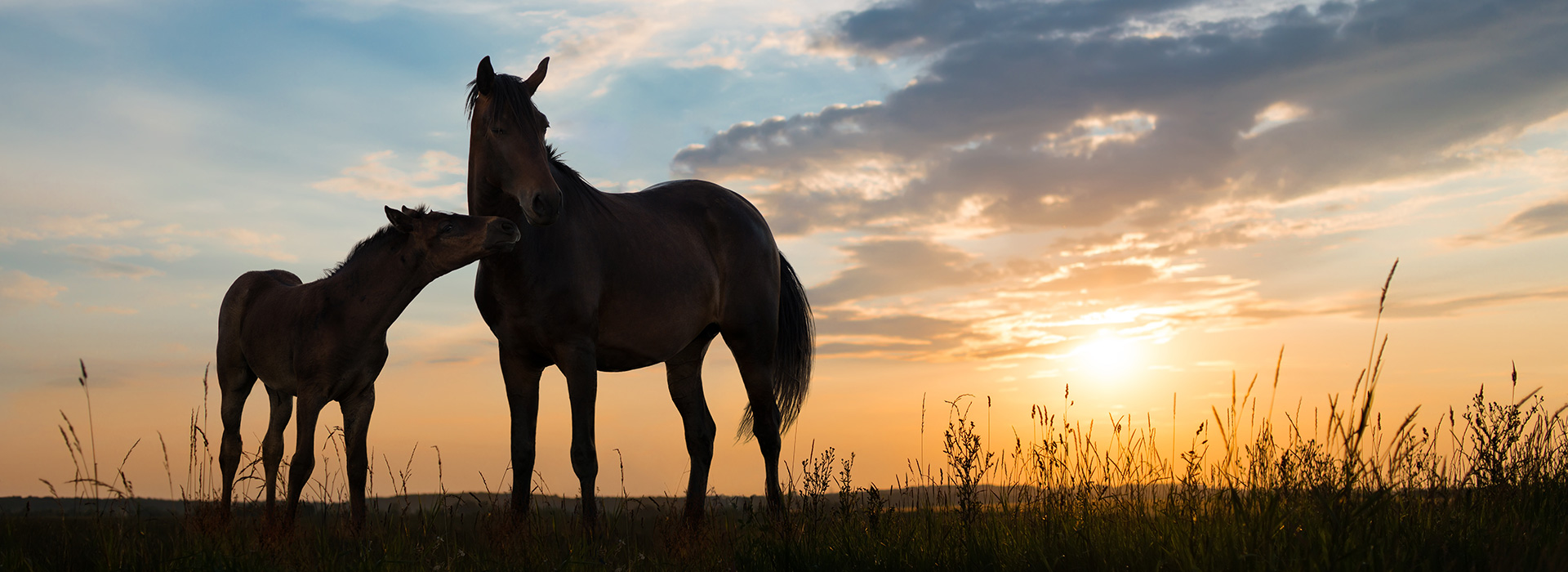Over the past few years, this has become a topic of much discussion within the equine industry. Many owners, breeders and trainers are against the use of such ingredients but do we really know what they are and how they could affect our horses?
So what are GMO’s?
“A genetically modified organism (GMO) is an organism (plant, animal, bacteria or virus) whose genetic makeup has been modified for a particular purpose. The organism does not occur naturally in this modified state. For example,a plant can be modified to carry an additional gene to increase resistance to drought conditions. Genes carry information in sequences & structures of DNA which gives organism its specific characteristics. Genes can be added, removed or changed, using modern biotechnology methods” (http://www.pub.ac.za/docs/factsheet_gmos.pdf).
Is this so new?
Technically not, as for generations mankind has been doing the same thing by the process of selective breeding. “The ancestor of the modern corn plant was a grass with only a dozen or so kernels on its seed-head. Through a process of selecting and breeding the plants with the largest kernels and the longest seed-heads, scientists have managed to create the more robust cobs we’re familiar with today. Similarly, the modern Thoroughbred horse was developed from much smaller Arabians (who lent speed and “quality”) crossed with larger, coarser British mares (who provided the size). The fastest, leggiest offspring were bred back to each other to emphasise those qualities and weed out the less desirable traits.” (TheHorse.com) “Some sort of human manipulation of physical traits has had a hand in the development of nearly every modern variety of commercial crop and every breed of horse, dog, cat, or other domestic animal on the planet. The difference is that since we’ve unravelled the mysteries of DNA, we’re able to select much more accurately and specifically for the traits we want, rather than doing endless breeding by trial and error. Being able to manipulate the genetic code has allowed us to make changes quicker” (TheHorse.com)
GMO’s in South African feed
GM (genetically modified) plants are already being cultivated as crops and consumed by humans and animals. Crops can be modified to have valuable characteristics such as tolerance to drought and herbicides, resistance to disease and insects, as well as improved nutritional content. Two GM feed crops that are cultivated in South Africa include insect-resistant maize (since 1998), and herbicide-tolerant soybeans (since 2001). Herbicides are chemical products used to destroy weeds, but not the crop plants. South Africa now ranks eighth of GM crop producing countries. Latest statistics from 2007 indicate that 51% of yellow maize, 62% of white maize, 80% of soybean crops are GM crops (Agri SA newsletter, Feb 2008).Measurements of GM content in food products published in 2006 (Viljoen et al, 2006) showed that 90% of soy products and 60% of maize products tested in South Africa contained GMOs.
South African scientists are researching and developing GM crops to solve problems specific to Africa, such as crops resistant to drought, maize resistant to virus infection and crops with improved nutritional content. An example of these is carrots which are being engineered to produce a higher calcium content. It has been shown that the calcium content of these bio-fortified carrots can be better absorbed and used by the body (Morris et al, 2008).
How are the new varieties created?
Insect resistance: When consumed by insects such as caterpillars, the bacterium Bacillus thuringiensis (Bt) produces a crystal protein in the gut to which the insect is intolerant and subsquently dies. The genes that produce these protein crystals are incorporated into the plant so that the plant produces the same protein crystals as the Bt bacterium and kills the caterpillars when they eat from that plant. The GM plant becomes known as, for example, Bt cotton or Bt maize. Herbicide (weed killer) tolerance: A gene from a bacterium is introduced into the plant to make it less sensitive to harmful effects of herbicides. In this way, herbicides can be used on crops to kill weeds and invasive plants while not affecting the crops.
Benefits:
Farmers can use less pesticide on insect-resistant GM plants. This means fewer chemicals that can damage the environment are washed into the soil, as well as healthier food. GM crops are better protected by, and are not so susceptible to diseases, insects and herbicides, allowing a more consistent yield. Higher yields of crops due to improved protection can lead to more availability and thus costs of certain ingredients being reduced. Costs are potentially saved through a reduced need for pesticides and/or herbicides.
Insect resistance has another important benefit—crops which have been attacked by insects can become vulnerable to fungus and mold infestations, which can be fatal to horses. If plants are bred with resistance to such pests, they may have a much lower incidence of fungus and mould. This, in turn, could mean fewer equine deaths due to mould poisoning.
Risks/Limitations
Farmers may use weed killers indiscriminately on herbicide resistant crops if they know their crops are less susceptible to these chemicals. Although the safety of GM products is tested in intense, short term studies, the long-term effects on health of GM food consumption has not yet been established and therefore any risks or limitations are unknown.
Safety of GM crops
Although further long term studies must be carried out, GMO ingredients are still subjected to stringent tests for safety. GM foods are, in fact, the only foods subjected to such strict testing.
The University of the Free State’s Genetically Modified Organisms testing facility is researching the health effects of GM crops. One major source of research is focusing on the potential of new allergens (Lack, 2002) through the transfer of genes from foreign organisms. Allergens are compounds that cause allergic reactions. No allergic effects have been found in any GM food currently on the market. There are systems and regulatory processes in place in South Africa which evaluate and regulate GM crops and food. Before any GM crop is released it is investigated for safety to both human health (including allogenicity) and the environment. There are currently no reports of adverse effects in the South African human population.
Are GM ingredients safe for horses?
There is no current research underway detailing information on the effects of GM ingredients on horse health; however, once again, no adverse effects have ever been reported in horses. A recent review of literature on GMO safety in livestock species world-wide (including 23 experimental studies conducted over the past four years at universities throughout the United States, Germany, and France on livestock species including chickens, sheep, and cattle being fed genetically modified corn or soybeans) found that in every case there was no significant difference in the animals’ ability to digest the GMO crops. There was also no significant difference in the weight gain, milk production, milk composition, or overall health of the animals when compared to animals fed non-GMO crops (Clark, J from TheHorse.com). While this study did not include equine data, it would be expected that similar results would be found, however more research will need to be carried out to confirm this.
Who determines whether GMOs are safe in SA?
South African regulations are determined by the South African government following standards set in the “Cartagena Protocol on Biosafety”, and guidelines from the international regulatory body called Codex (Codex Alimentarius Commission). This is a joint Food and Agricultural Organisation (FAO) and World Health Organisation (WHO) body which compiles the standards, codes of practice, guidelines and recommendations which together form the international food code. The procedures for dealing with GMOs in South Africa are stipulated in the Genetically Modified Organisms Act of 1997. Applications to test, produce and trade in GM crops must be sent to the Registrar at the National Department of Agriculture.
GMO Labelling
Regulations for the labelling of GM foods in South Africa are stipulated in the Foodstuffs, Cosmetics and Disinfectants Act, 1972, and are expressed in “Regulations Relating to the Labelling of Foodstuffs Obtained Through Certain Techniques of Genetic Modification” (Government Gazette No. 25908, 2004). Labelling is currently regulated by the Department of Health. Currently GM foods do not need to be labeled unless: A GM food differs significantly in composition, nutritional value, mode of storage, preparation, or cooking from that of its
corresponding foodstuff. The label of a GM food must indicate the likelihood of an allergic reaction if the inserted gene is derived from the major allergens: crustaceans, eggs, fish, milk, groundnuts, mollusks, soybeans, tree nuts or wheat. The food must be labeled if a plant food contains genetic material derived from an animal or human, or if an animal derived food contains genetic material from a human or a different animal family. There are no regulations regarding labeling of animals or animal products which have been fed on genetically modified feed. A product cannot be labeled “GM-free” if no GM products are available in that class of food as this would be misleading and imply that any products not labeled “GM-free” would be genetically modified.
Despite this, however, it is virtually impossible to claim a feedstuff as GM-free, as even with tight quality control, accidental contamination of a non-GM crop cannot be ruled out. Non-GM describes products from ingredients where every effort has been made to exclude GM material.
In the study by Viljoen et al (2006), it was found that genetic modification was detected in 71% of products labeled “non-GM”, “GMO free” and/or “organic”. In the USA, the FDA (Food and Drug Administration) suggests that “free” refer to low minimal levels, but not in fact “GM free” (Partridge and Murphy, 2004). Different countries have threshold levels of GM levels which are acceptable before a product can be called non-GM, e.g. EU has a threshold of 0.9%, Australia and New Zealand have a threshold of 1.0% (Viljoen et al, 2006).
Equus Feed’s stance on GM ingredients
At Equus we ensure 100% compliance with all legislation applicable to the animal feed industry, including all applicable GMO regulations. We keep abreast and study thoroughly the latest developments and scientific research on the effect of GMO’s on the health and performance of equines. However, as mentioned above, it is extremely difficult to ensure that all ingredients are GM free as the prevention of cross contamination between GMO and non GMO raw materials (eg. Maize and soya) is not actively encouraged by legislation and therefore not pursued by the grain and raw material handling industry. Equus clients can rest assured, however, that should any research show the possibility of adverse effects in equines, Equus would take immediate action against the inclusion of GM ingredients in our feeds.
References:
http://www.pub.ac.za/docs/factsheet_gmos.pdf any references from research papers can be found in this publication.
TheHorse.com – http://www.thehorse.com/articles/12444/genetically-altered-feeds-modified-munchies




